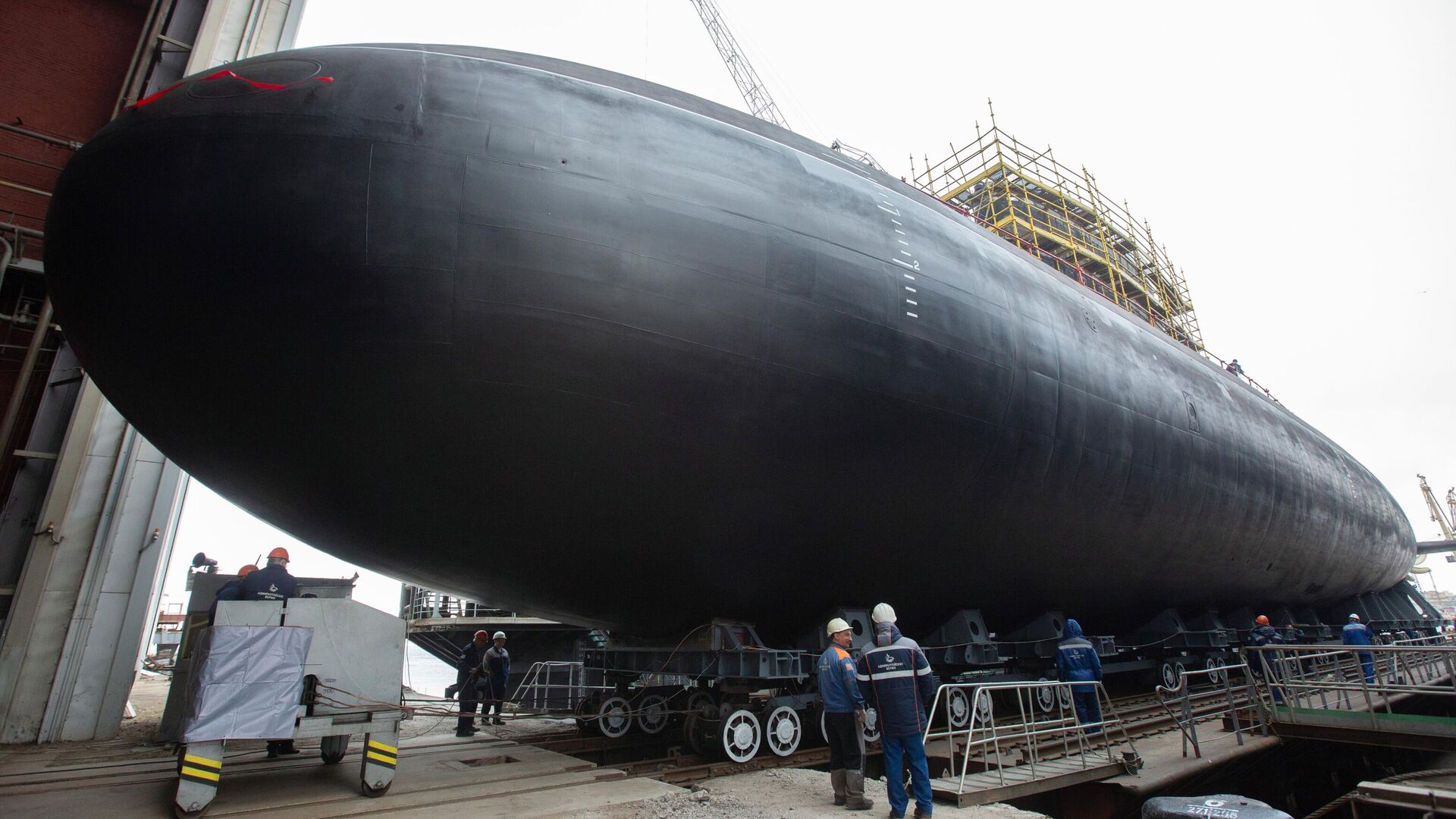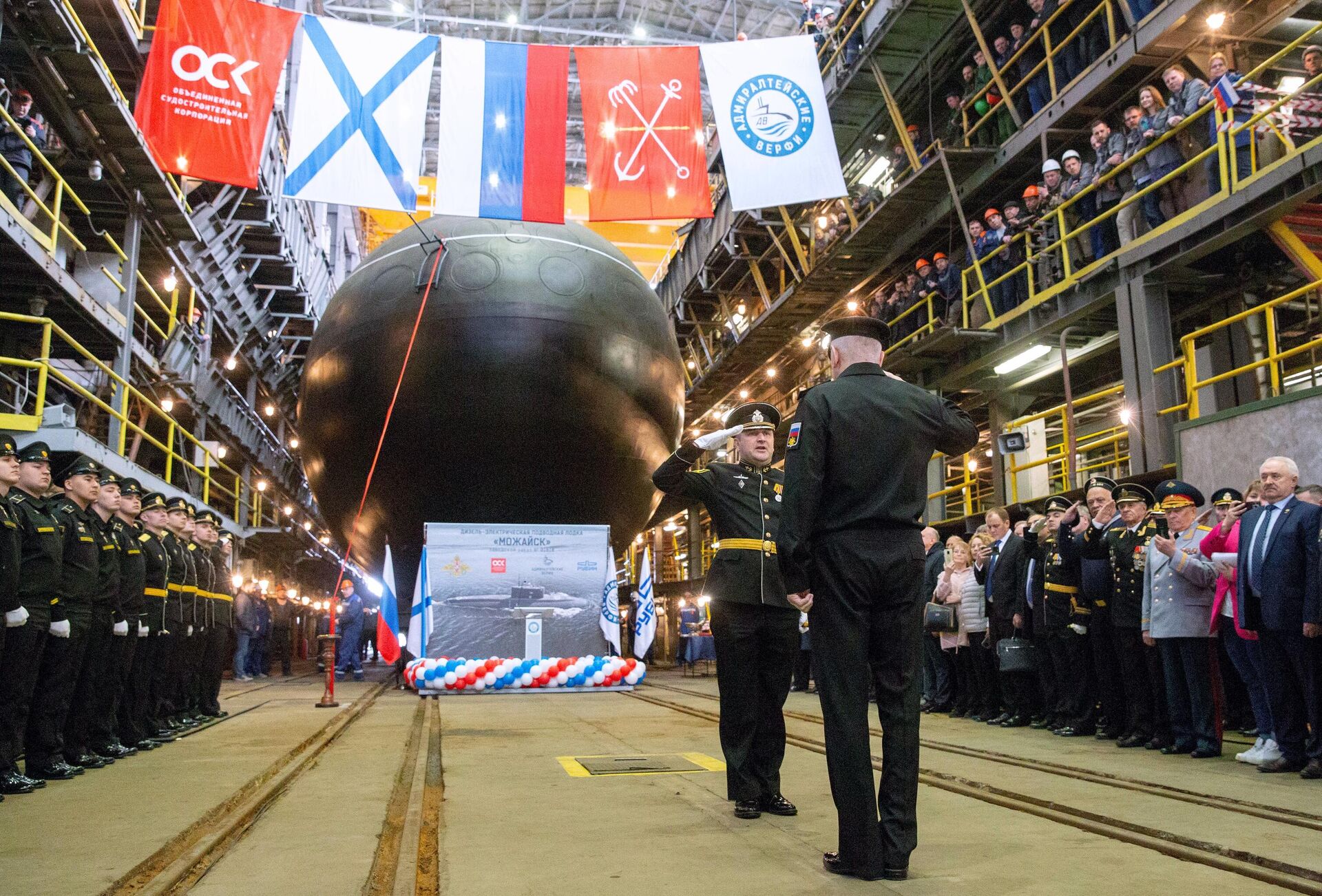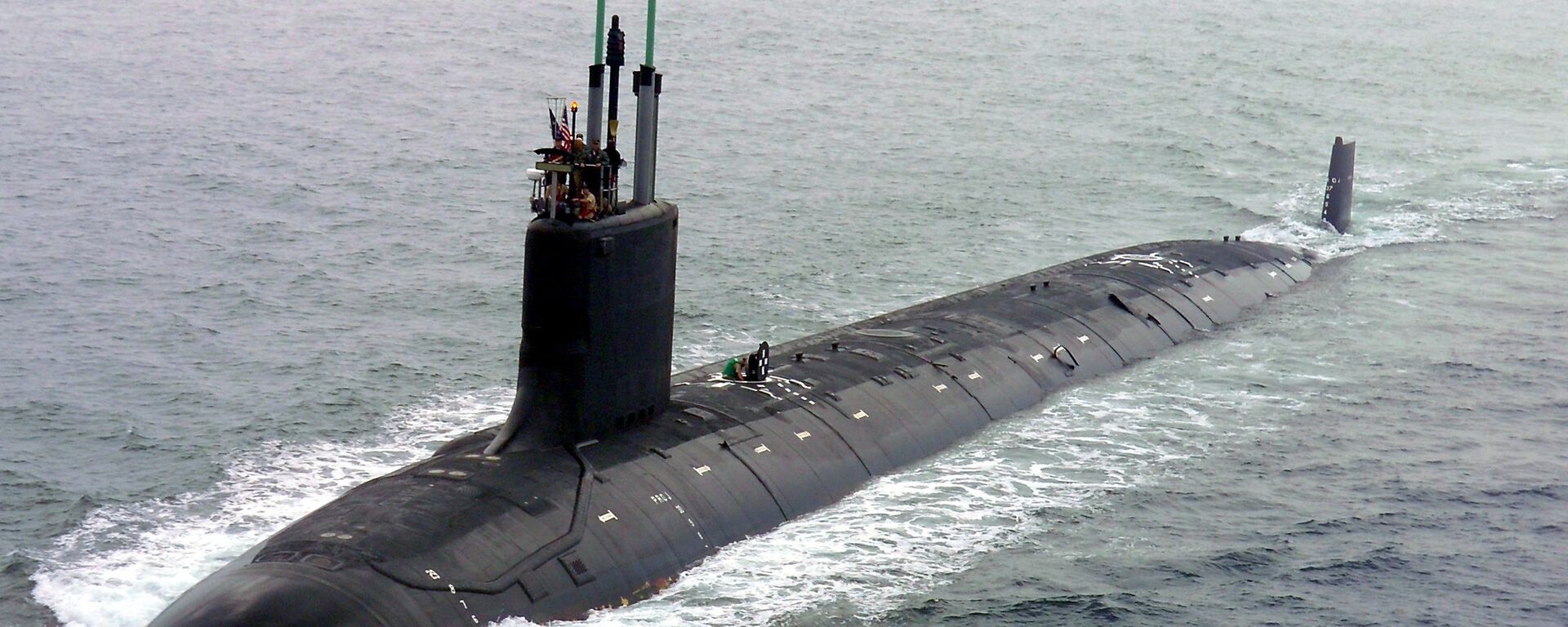https://sputnikglobe.com/20230428/project-6363-varshavyanka-inside-russias-stealthiest-non-boomer-sub-1109917484.html
Project 636.3 Varshavyanka: Inside Russia’s Stealthiest Non-Boomer Sub
Project 636.3 Varshavyanka: Inside Russia’s Stealthiest Non-Boomer Sub
Sputnik International
Some naval strategists see the 21st century as the era of the nuclear-powered sub, with the United States doing away with diesel-electric boats entirely in the 1990s.
2023-04-28T12:58+0000
2023-04-28T12:58+0000
2023-04-28T13:05+0000
military
varshavyanka-class (project 636.3) submarine
submarine
https://cdn1.img.sputnikglobe.com/img/07e7/04/1c/1109917858_0:152:3102:1897_1920x0_80_0_0_4922f6cb89c1d8ac54c63728108fda14.jpg
The fifth Project 636.3 Varshavyanka-class diesel submarine built for Russia’s Pacific Fleet was floated out of the Admiralty Shipyard in St. Petersburg on Thursday in a ceremony attended by senior naval and industry officials, including Navy Commander-in-Chief Admiral Nikolai Yevmenov.The class of attack sub, created by St. Petersburg’s legendary Rubin Design Bureau, is a modernized variant of Project 636, which is itself an improvement of Project 877 Paltus (NATO reporting name Kilo), created and commissioned at the twilight of the Cold War in the 1980s to take on NATO strike groups and lurk in Transatlantic and Pacific shipping lanes.The latest variant of the boat, which began to be delivered to the Russian Navy in the mid-2010s, features everything you would expect from a modern attack submarine, including advanced sonar, 6x533 mm torpedoes (plus 12 reloads), up to 24 anti-ship mines, Kalibr anti-ship and ground attack cruise missiles, and a stock of Strela-3 and Igla-1 man-portable surface-to-air missiles.Why So Stealthy?Dubbed 'Black Holes' by Western defense observers, Project 636.3 subs feature a hull design reminiscent of a droplet of water, and a diesel-electric propulsion system isolated in a special rubberized base, preventing it from touching the hull and thus vibrations which turn into sonar noise. The subs are also fitted with an external anechoic tile coating – which deadens noise coming from inside the vessels.The subs' design, surpassed in stealth characteristics perhaps only by France's strategic Triomphant-class ballistic missile submarine, allows them to evade enemy fleets, slip past anti-submarine warfare (ASW) warships and aircraft, and – if worst comes to worst, launch their torpedoes and cruise missiles at the enemy before being detected.The Varshavyankas’ stealth characteristics are not only theoretical. Time and time again, NATO countries have deployed warships, ASW helicopters, sonar buoys and other equipment to hunt for the Russian subs.In one incident in early 2021, the Rostov-on-Don Project 636.3 boat disappeared from NATO sonars in the Mediterranean, sparking a frantic search off the coasts of Israel, Lebanon and Syria. An informed military source told Sputnik that the US and its allies deployed "large forces to search for the Russian sub, but to no avail. This means that in conditions of hostilities, they are in the crosshairs, and this bothers them tremendously." A similar incident took place later that year, with Britain’s Royal Navy scrambling specially-equipped choppers to find a Russian sub stalking a the HMS Queen Elizabeth carrier in the Mediterranean, but failing in the mission.Variants of the Varshavyanka-class and their predecessor, Project 877 Paltus, have proven themselves in service not only with the Russian Navy, but those of several other navies as well – with over 60 boats in service with the navies of China, India, Iran, Vietnam, Algeria, Myanmar, Poland, and Romania. Russia has not yet exported its Project 636.3 abroad, but Project 363 boats have been delivered to China, Vietnam and Algeria.Proven by the test of time, Project 636 and 636.3 subs have one other major advantage over their nuclear cousins: cost. For example, while a single US Virginia-class fast attack sub costs upwards of $3.45 billion, Varshavyankas (their export Project 636 variant anyway) reportedly cost around $200 million apiece - or over seventeen times less.
https://sputnikglobe.com/20230428/huge-uncertainty-over-aukus-sub-project-as-costs-shown-to-include-50-contingency-fund-1109912577.html
https://sputnikglobe.com/20230420/iranian-navy-forced-us-nuclear-submarine-to-surface-change-track-in-hormuz-strait-1109700784.html
Sputnik International
feedback@sputniknews.com
+74956456601
MIA „Rosiya Segodnya“
2023
News
en_EN
Sputnik International
feedback@sputniknews.com
+74956456601
MIA „Rosiya Segodnya“
Sputnik International
feedback@sputniknews.com
+74956456601
MIA „Rosiya Segodnya“
project 636, project 636.3, varshavyanka, attack sub, non-nuclear sub, submarine, naval warfare, what submarines russia has, who uses diesel submarines, is it possible to detect russian submarine
project 636, project 636.3, varshavyanka, attack sub, non-nuclear sub, submarine, naval warfare, what submarines russia has, who uses diesel submarines, is it possible to detect russian submarine
Project 636.3 Varshavyanka: Inside Russia’s Stealthiest Non-Boomer Sub
12:58 GMT 28.04.2023 (Updated: 13:05 GMT 28.04.2023) Some naval strategists see the 21st century as the era of the nuclear-powered sub, with the United States doing away with diesel-electric boats entirely in the 1990s. Russian engineers hold a different view, and have proven time and time again that non-nuclear subs have more than enough 'stealthiness' to hold their own against entire NATO armadas.
The fifth Project 636.3 Varshavyanka-class diesel submarine built for Russia’s Pacific Fleet was floated out of the Admiralty Shipyard in St. Petersburg on Thursday in a ceremony attended by senior naval and industry officials, including Navy Commander-in-Chief Admiral Nikolai Yevmenov.
The class of attack sub, created by St. Petersburg’s legendary Rubin Design Bureau, is a modernized variant of Project 636, which is itself an improvement of Project 877 Paltus (NATO reporting name Kilo), created and commissioned at the twilight of the Cold War in the 1980s to take on NATO strike groups and lurk in Transatlantic and Pacific shipping lanes.
The latest variant of the boat, which began to be delivered to the Russian Navy in the mid-2010s, features everything you would expect from a modern attack submarine, including advanced sonar, 6x533 mm torpedoes (plus 12 reloads), up to 24 anti-ship mines, Kalibr anti-ship and ground attack cruise missiles, and a stock of Strela-3 and Igla-1 man-portable surface-to-air missiles.
But it's the Varshavyanka class’s stealthy design characteristics which have allowed the subs to outperform and outlast both foreign and domestic competitors and to remain relevant into the 21st century, where, just as at the dawn of submarine warfare in the 20th century, the primary objective remains to avoid enemy detection.
Dubbed
'Black Holes' by Western defense observers, Project 636.3 subs feature a hull design reminiscent of a droplet of water, and a diesel-electric propulsion system isolated in a special rubberized base, preventing it from touching the hull and thus vibrations which turn into sonar noise. The subs are also fitted with an external anechoic tile coating – which deadens noise coming from inside the vessels.
The subs' design, surpassed in stealth characteristics
perhaps only by France's strategic Triomphant-class ballistic missile submarine, allows them to evade enemy fleets, slip past anti-submarine warfare (ASW) warships and aircraft, and – if worst comes to worst, launch their torpedoes and cruise missiles at the enemy before being detected.
The Varshavyankas’ stealth characteristics are not only theoretical.
Time and
time again, NATO countries have deployed warships, ASW helicopters, sonar buoys and other equipment to hunt for the Russian subs.
In one incident in early 2021, the Rostov-on-Don Project 636.3 boat disappeared from NATO sonars in the Mediterranean, sparking a frantic search off the coasts of Israel, Lebanon and Syria. An informed military source told Sputnik that the US and its allies deployed "large forces to search for the Russian sub,
but to no avail. This means that in conditions of hostilities, they are in the crosshairs, and this bothers them tremendously." A similar incident took place later that year, with Britain’s Royal Navy
scrambling specially-equipped choppers to find a Russian sub stalking a the HMS Queen Elizabeth carrier in the Mediterranean, but failing in the mission.
Variants of the Varshavyanka-class and their predecessor, Project 877 Paltus, have proven themselves in service not only with the Russian Navy, but those of several other navies as well – with over 60 boats in service with the navies of China, India, Iran, Vietnam, Algeria, Myanmar, Poland, and Romania. Russia has not yet exported its Project 636.3 abroad, but Project 363 boats have been delivered to China, Vietnam and Algeria.
Proven by the test of time, Project 636 and 636.3 subs have one other major advantage over their nuclear cousins: cost. For example, while a single US Virginia-class fast attack sub costs upwards of
$3.45 billion, Varshavyankas (their export Project 636 variant anyway)
reportedly cost around $200 million apiece - or over seventeen times less.








